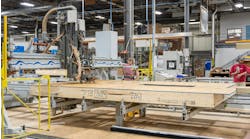I just returned home to Kansas City after spending most of the week in the Boston area. I was in Cambridge, Mass., to co-manage the last of our 2017 National Electrical Code Change conferences. This series of two-day training events — with stops in St. Louis, Philadelphia, Seattle, and Boston — received high marks from the 435 individuals who showed up to learn about the latest revisions in this edition of the NEC.
As has been the case for quite a number of past Code cycles, EC&M’s Code Consultant Mike Holt filled the role of lead instructor for these sessions. His dynamic teaching style kept attendees engaged, and his real-life work experiences kept them entertained. It was a gratifying experience for me to be on hand for three of the four events we hosted (sorry St. Louis attendees, I’ll see you all the next time we’re in town). It also provided a valuable reminder of just how important it is to maintain your technical skills throughout your career via continuing education courses.
Speaking of training, that is the theme of this month’s issue. But unlike our Code training conferences that deliver value to professional engineers, master electricians, journeyman electricians, electrical inspectors, and other electrical professionals, our cover story this month (“High School Hopefuls”) drills down a few layers and checks in on the youth in our country. The story investigates the dwindling number of young men and women who are showing an interest in our industry and what needs to be done to reverse the decline in vocational-technical and apprenticeship training programs.
As noted in the story by freelance writer Tom Zind, “Working to achieve more accurate parity with college prep is part of answer, but that may be a steep climb. So one of vo-tech’s central challenges will be to gain a freer hand in courting students who may fit the profile of a trade-career candidate — and to clearly demonstrate how early training can lay a foundation for solid career opportunities.”
As we’ve reported in a number of different stories over the last couple of years, this is a serious issue that must be addressed by everyone in our industry, including manufacturers, engineering firms, electrical contractors, associations, union and non-union groups, schools, universities, and other training organizations. Without a strong pipeline of new young talent entering the workforce, each and every one of us is going to suffer in one way or another. So what type of investment are you planning to make in training this year?




